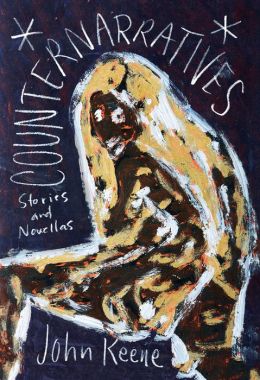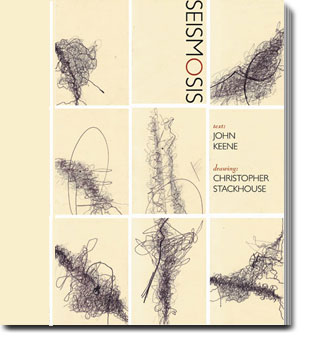 |
| Yves Bonnefoy at the Collège de France in 2001 (The Telegraph/AP/Getty) |
On July 1 of this year, one of the most important--arguably the most important--late 20th century poets of the French language, Yves Bonnefoy--passed away in Paris. Bonnefoy remains little known in the US, I would venture from anecdotal evidence, even though he spent significant amounts of time here, even teaching for a while at a number of universities, including Brandeis, Johns Hopkins, Connecticut, Yale, Williams, and the Graduate Center of the City University of New York; unlike a number of his Francophone contemporaries, his poems are fairly accessible, if quite distinctive from the mainstream of Anglo-American poetics, and most can be found in translation too. In 1981, he was awarded the chair in poetry at the august Collège de France, and taught there for the remainder of his career.
A native of Tours, Indre-et-Loire, France, and an associate of the Surrealists, Bonnefoy might be thought of as the second generation of that movement, though he declined to sign one of their manifestos in 1947, and his poetry stands as testimony to a rather different approach to composition and image-making, even if the Surrealist and prior French influences, including Symbolism, are evident in it. Bonnefoy was not just a major poet, however; he published copiously, creating an imporessive oeuvre that includes criticism, biography, and fiction. One of his chief foci was art history. His book-length prose works include biographies of Alberto Giacometti and Francisco Goya. He also was a translator, primarily of Shakespeare's plays, as well as notable poets including John Donne and W. B. Yeats.
Bonnefoy's first book, Du mouvement et de l'immobilité de Douve, usually translated as On the Motion and Immobility of Douve, though I like the English cognate "movement" better, heralded his entry into the world of letters. It is, like all of his work more or less, a series of highly lyrical, often haunting appeals, alternating between abstract and concrete language, that when read aloud possesses the air of song. Even the book's title is melodic, rhyming, consonant: Bonnefoy signals Douve's presence before calling her name forth in that initial "Du [m]ouve[ment]." I find that so much of his poetry carries this linguistic-semantic resonance, so that even at its most abstract, it is still conveying, in indirect ways, a surplus of meaning.
Nevertheless, Bonnefoy's poetry may puzzle people grounded in the English and American traditions of poetry that is almost always about someone, something, some place, using specific, non-abstract language. This is, in fact, one of many an introductory poetry class will warn budding poets against; alluring as the examples of a Mallarmé or Supervielle--to pick a different generation of poetry--may be, too much abstraction does not a good poem make, even though there are traditions within US poetry in which abstraction flourishes. Bonnefoy's poems often charge the abstraction with a background conflict--a quest, a battle, loss--and dream-like movement, giving them inherent drama that keeps the reader engaged. With Douve, one of the most basic questions is, who is this person to whom the poetic speaker is writing? Who or what is a "Douve"? That alone made me want to read and decipher that text.
8 years ago I had the pleasure of translating a short catalogue essay, on the work of my dear friend J. Eric Hamel, by Bonnefoy, but I have never translated his poetry before. Here, therefore, is my rough translation of my favorite poems of his, "Vrai nom," from his first book. If you read French, you can both see and hear the music, but even if not, try the words and listen to what you hear. Please forgive any felicities, and do offer your thoughts if you'd like. In tribute, RIP, Yves Bonnefoy!
TRUE NAME
I will name desert this castle that you were,
Night that voice, absence your face,
And when you fall in the barren earth
I will name nothingness the lightning that bore you.
Dying is a country that you loved. I come
But eternally by your dark roads.
I destroy your desire, your form, your memory,
I am your pitiless enemy.
I will name you war and will take
for myself war's liberties and will hold
in my hands your obscure and well-traveled face,
In my heart this country which illuminates the storm.
To appear the deep light requires
an earth profligate and broken by the night.
From a shadowy wood the flame grows bright.
The word itself needs substance,
An inert shoreline beyond all song.
You must overcome death so that you can live,
Blood spilled is the purest presence.
Copyright © John Keene, all rights reserved.
And the original French:
VRAI NOM
Je nommerai désert ce château que tu fus, Nuit cette voix, absence ton visage, Et quand tu tomberas dans la terre stérile Je nommerai néant l'éclair qui t'a porté. Mourir est un pays que tu aimais. Je viens Mais éternellement par tes sombres chemins. Je détruis ton désir, ta forme, ta mémoire, Je suis ton ennemi qui n'aura de pitié. Je te nommerai guerre et je prendrai Sur toi les libertés de la guerre et j'aurai Dans mes mains ton visage obscur et traversé, Dans mon cœur ce pays qu'illumine l'orage. La lumière profonde a besoin pour paraître D'une terre rouée et craquante de nuit. C'est d'un bois ténébreux que la flamme s'exalte. Il faut à la parole même une matière. Un inerte rivage au delà de tout chant. Il te faudra franchir la mort pour que tu vives, La plus pure présence est un sang répandu.
Copyright © the estate of Yves Bonnefoy, 2016. All rights reserved.














